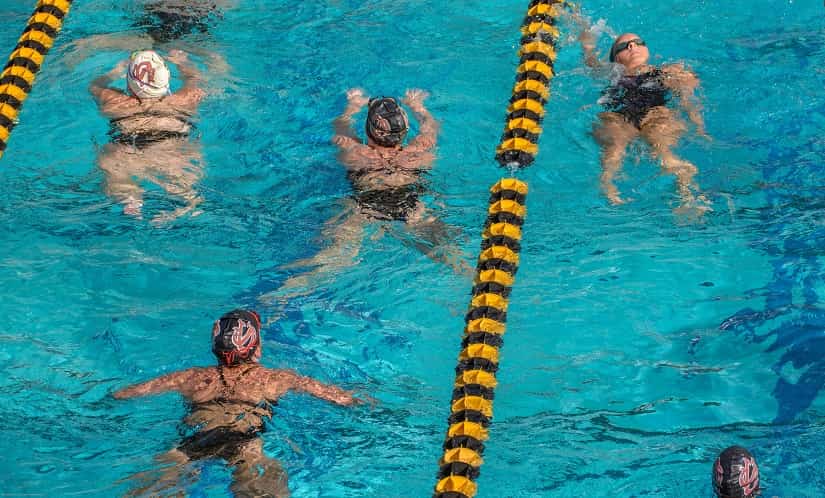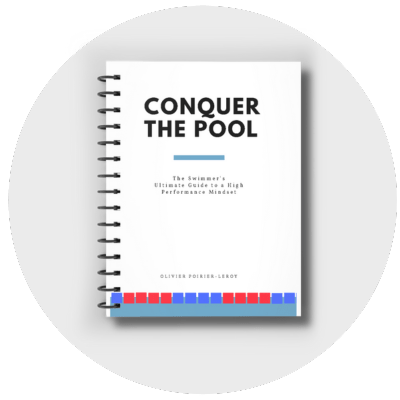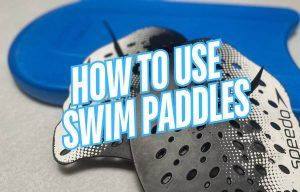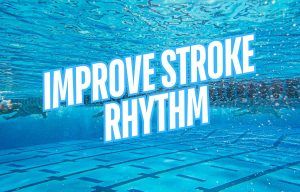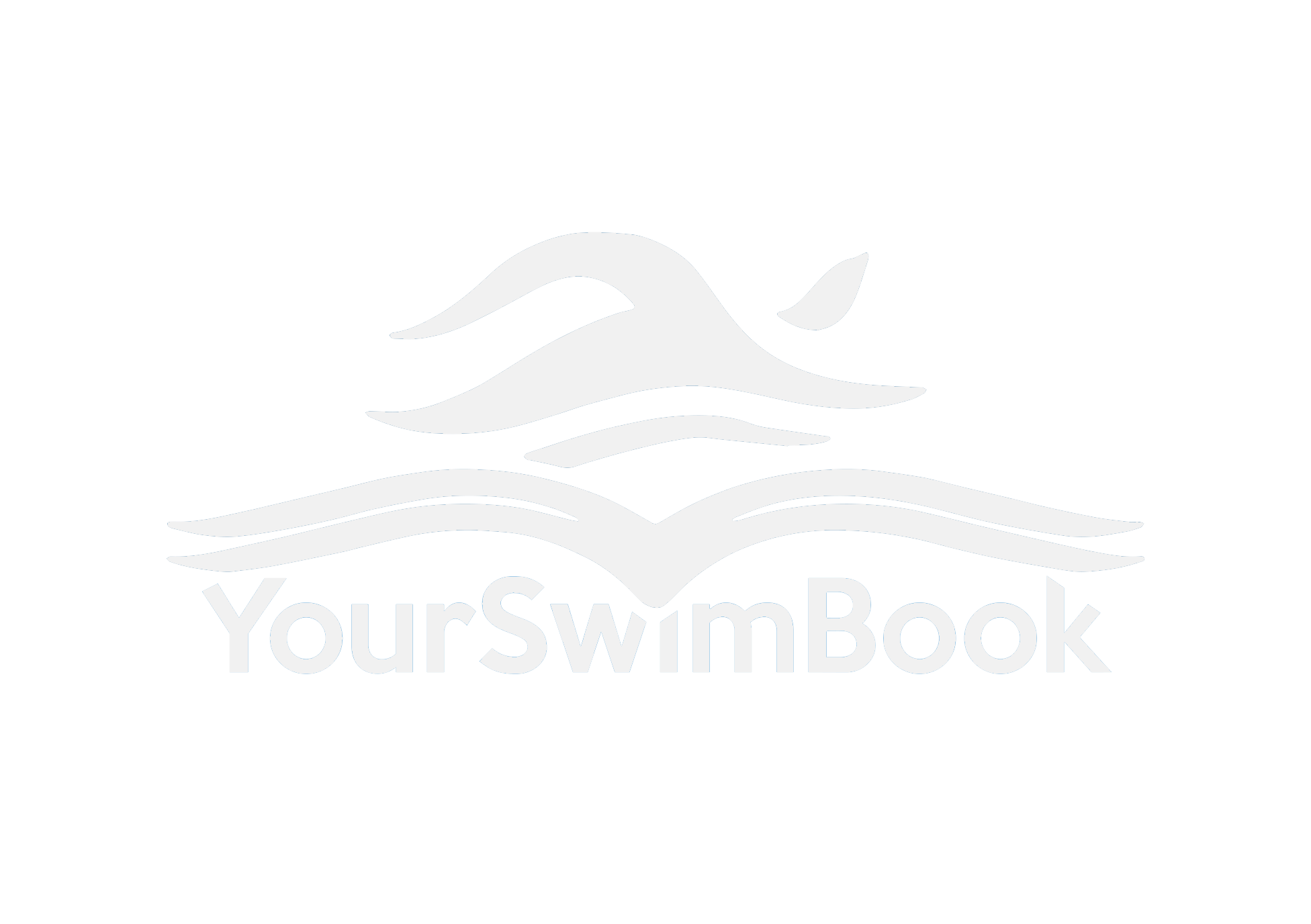How focused are your warm-ups in practice? Here’s how to get more from the part of your workout that gets the least amount of love.
Standing ten feet behind the edge of the pool, you bundle yourself tightly in your swim parka, shivering.
“Pitter patter, let’s get at err!” coach bellows across the pool.
The water is cold. Goosebumps shoot up your legs, giving you a good shiver. Thinking over the long warm-up set, and how long, unbroken, and otherwise boring it is, you continue to vie for time.
When you finally do dive into the water, your technique isn’t all that hot. Your streamlines aren’t tight. The flip turns slow and unhurried.
There’s no focus. No effort to be efficient. No thought to priming ourselves for later in the workout.
But think about this for a chlorinated moment…
Our warm-ups make up a sizable amount of our overall workout. Sometimes up to 20%. Or more. That’s a lot of swimming over the course of a season.
If we showed up to practice and warmed-up with focus, and that increased the effectiveness of our practices by 10%, what kind of gains do you think that would create over the medium and long term?
Quite a bit, right?
The way you approach your warm-up, the focus and attentiveness given during the opening sets, has a powerful effect on the rest of your workouts, and ultimately, your performance in the water.
How to Develop Better Warm Up Habits
Sit down with your goals pre-practice.
Having your goals nearby is critical. And will help us stay on task and motivated.
Michael Phelps had his goal sheets nearby so that when he got out of the bed he knew why he was waking up while it was still dark out. Katie Ledecky wrote her goals out on her pull buoy, so that they would be front and center for her at practice every day.
On days where you are feeling particularly sluggish, and need to remind yourself whyyyyyy sit down and review your goals. Getting warmed-up starts with having your mindset in order.
Reviewing the things you want to accomplish this season before you hop in the water will boost your focus levels. It brings a new level of attention to detail to your swimming.
What are you hoping to accomplish today?
What are you looking to accomplish over the course of your swim practice? Is it a recovery session? Looking to level up your power with some in-the-water resistance work? Or are you going to fire off some race pace 50s?
Going on deck and hitting the water for warm-up knowing precisely what you want to accomplish helps concentrate your effort on getting ready.
Warm-up what you want to crush later in the workout.
The warm-up, and the pre-set that usually follows, is designed to get you loose and prepared for the main set. If you have a set of race pace 50s freestyle coming up later, work to get your freestyle feeling good and loose.
Whether that means using some freestyle drills to help you improve your feel for the water, doing some stroke-specific sculling, or some short-burst efforts to get your fast twitch muscle feeling extra fast twitchy, lay a foundation for a successful main set in your warm-up.
Hit the soft spot of your swimming.
We all have those parts of our swimming that we know need some extra attention. But because we aren’t that good at it we tend to avoid it. But if it’s important to your swimming you should be doing it regularly.
Warm-up is a great low-pressure part of your workout where you can pay attention to the things that need extra focus and attention. It could be your breaststroke kick that needs some TLC. Or your underwater dolphin kick.
Whatever it is, add a quick shot of it into your warm-ups—doing this regularly will give you better gains than doing one set a every week or two targeting your weakness. And eventually, simply doing it over and over again, that soft spot in your swimming won’t be so soft anymore.
Have a set warm-up.
Doing the same warm-up (something Dave Salo over at USC regularly does with his swimmers) every day helps to encourage swimmers to get into the zone mentally.
By doing an identical general warm-up each day you build the mental habit of being ready to perform without having to overthink things.
On the other side of things, you may prefer doing something different in order to keep things spicy in your workouts. Whichever the case, it doesn’t really matter, so long as the warm-up is done properly and it works to get you ready to perform optimally.
Get mentally primed with some visualization.
The biggest battle isn’t the limitations of our bodies, it’s convincing our minds to get down to business in the water. It’s convincing ourselves to ignore the soreness, the fatigue, and the mental blocks that come with going toe-to-toe with a brutal swim practice.
One powerful (and proven) way to get your brain into a better space is to do some pre-practice visualization. This is one of my favorite go-to tools for helping develop focus in training.
Spend five minutes before practice with your eyes closed, visualizing the kind of swimming you want to be doing. How you want the water to feel. The crisp snap of your flip turns. The speed you carry out of the breakouts.
Do this before your workout and you will find that it will take far less time to get up to speed and efficiency in the water.
More Stuff Like This:
The Swim Meet Warm Up: Everything You Need to Know About Preparing to Swim Fast. From the science behind it, what you should do if the water is too crowded, to best practices for fast swimming, here is everything you ever wanted to know about the swim meet warm-up.
You’ve Warmed Up: Now Don’t Just Sit Around. It’s the day of the big race and you are ready to throw down on your PB’s. Here is a proven way to supercharge your warm-up so that your hard work shows up at race time.


